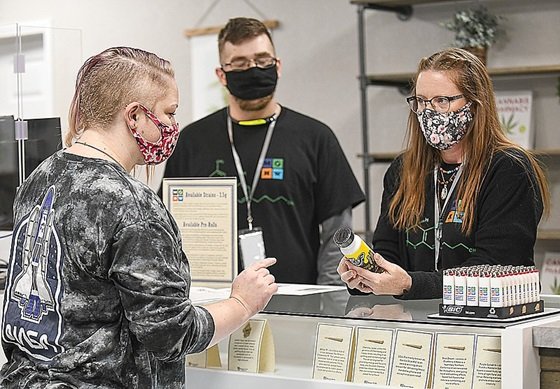In the heartland of America lies missouri health and wellness, a state known for its rolling hills, vibrant cities, and a commitment to fostering health and wellness among its residents. From bustling urban centers like St. Louis and Kansas City to the serene beauty of the Ozarks, Missouri offers a diverse landscape that supports a variety of lifestyles and health needs. In this article, we explore the initiatives, challenges, and successes in promoting health and wellness across the state of Missouri.
Healthcare Landscape
Missouri health and wellness healthcare system is robust, comprising a network of hospitals, clinics, and healthcare providers dedicated to serving its population. According to the Missouri Department of Health and Se nior Services (DHSS), the state has made significant strides in improving healthcare access and outcomes in recent years. Key initiatives include expanding Medicaid coverage to low-income adults, enhancing mental health services, and addressing disparities in rural healthcare access.

Urban areas such as St. Louis and Kansas City are home to leading medical institutions like Barnes-Jewish Hospital and Children’s Mercy Hospital, respectively. These facilities not only provide advanced medical care but also contribute to research and education in healthcare, benefiting both local residents and the broader medical community.
In rural Missouri, access to healthcare remains a challenge, with issues such as physician shortages and limited specialty care options. Telemedicine has emerged as a vital tool in bridging these gaps, allowing patients in remote areas to consult with healthcare providers virtually. Statewide initiatives to incentivize healthcare professionals to practice in rural areas aim to mitigate these disparities over time.
Public Health Initiatives
The Missouri DHSS plays a pivotal role in promoting public health through various initiatives and programs. Disease prevention and control efforts focus on immunizations, chronic disease management, and tobacco cessation. The DHSS collaborates with local health departments and community organizations to implement these programs effectively across the state.

One notable initiative is the Missouri WIC (Women, Infants, and Children) program, which provides nutrition education, breastfeeding support, and supplemental foods to pregnant women, new mothers, and young children. By addressing nutritional needs early in life, the program aims to improve long-term health outcomes for participants.
Community Wellness Programs
Across Missouri, communities are taking proactive steps to promote wellness and prevent chronic diseases. Local parks and recreation departments offer fitness classes, walking trails, and sports leagues to encourage physical activity among residents of all ages. Farmers’ markets and community gardens promote access to fresh, locally grown produce, supporting healthy eating habits.
In St. Louis, the Gateway Greening program has transformed vacant lots into vibrant community gardens, fostering a sense of pride and promoting urban agriculture. Similarly, the Kansas City Health Department’s Healthy Communities initiative works to create environments that support healthy lifestyles through policy changes and community engagement.
Mental Health Awareness
Mental health awareness and access to services are critical components of overall wellness in Missouri. The state has made efforts to reduce the stigma associated with mental illness and increase access to treatment options. School-based counseling programs and crisis intervention services aim to support children and adolescents facing mental health challenges.
The Missouri Department of Mental Health oversees a network of community mental health centers that provide counseling, therapy, and psychiatric services to individuals of all ages. Peer support programs and advocacy organizations play a vital role in connecting individuals with resources and promoting mental wellness throughout the state.
Challenges and Opportunities
Despite progress in healthcare and wellness initiatives, Missouri faces several challenges in improving overall health outcomes. High rates of obesity, particularly among children, continue to be a concern. Addressing socioeconomic disparities and access to healthcare in underserved communities remains a priority for policymakers and healthcare providers alike.
The opioid epidemic has also had a significant impact on Missouri, contributing to substance abuse and overdose deaths. State and local agencies have implemented strategies to enhance prescription drug monitoring, expand treatment options, and educate communities about the risks of opioid misuse.
Looking forward, Missouri has opportunities to build on its strengths and address these challenges through collaborative efforts and innovative solutions. Investing in preventive care, expanding telehealth services, and promoting healthier lifestyles are key strategies for improving the health and wellness of all Missourians.
Conclusion
In conclusion, missouri health and wellness dedicated to promoting health and wellness through a combination of healthcare access, public health initiatives, community engagement, and mental health awareness. By addressing current challenges and seizing opportunities for improvement, the state aims to enhance the quality of life for its residents and build a healthier future for generations to come. Whether in urban centers or rural landscapes, the spirit of health and wellness thrives in the Show-Me State, making Missouri a leader in fostering well-being across the Heartland of America.
By prioritizing collaboration among healthcare providers, policymakers, and community stakeholders, Missouri continues to make strides in creating a healthier and more resilient state. As initiatives evolve and new challenges arise, the commitment to improving health outcomes remains steadfast, reflecting Missouri’s dedication to the well-being of its diverse population.











